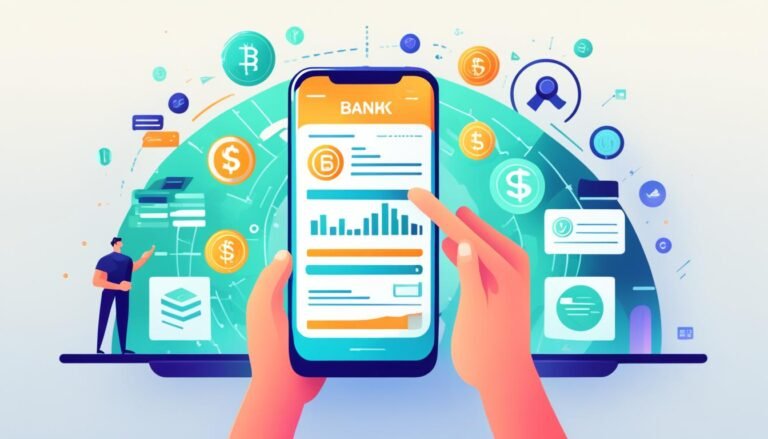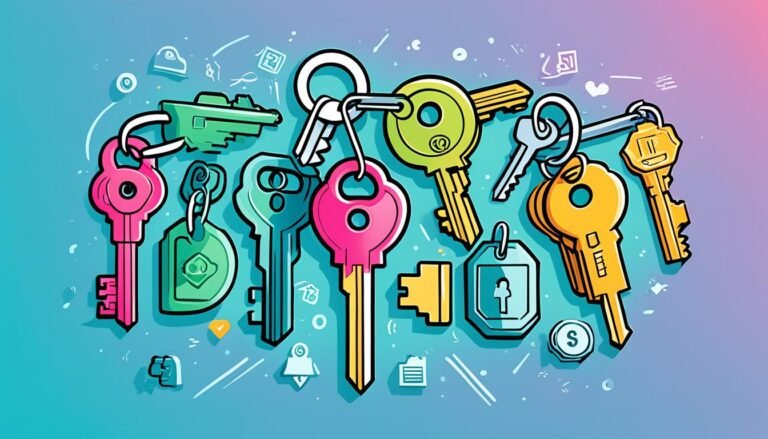Financial Inclusion: The Unbanked Revolution Changing the World
Imagine a world where nearly 1.7 billion adults are left out of the financial system. They don’t have bank accounts or the benefits that come with them. This is not something from long ago; it’s happening right now, says the World Bank. The goal of financial inclusion is to close this huge gap. It aims to give everyone access to financial services. This will change the future of managing money and improve prosperity.
Digital banking and financial education programs are leading us to a more inclusive economy. These initiatives help people get financial services. This can change lives and the global market. People who were left out of traditional banking can now find security and independence.
Let’s explore this revolution where digital transactions and education open up new opportunities. Financial inclusion is more than just having a bank account. It’s about getting chances for a better life. It leads to empowerment and a world where everyone can prosper together.
Key Takeaways
- Financial inclusion helps lift the unbanked and underbanked people.
- Digital banking brings financial services to those who were left out before.
- Banking access and education lead to economic empowerment.
- Inclusivity is key for sustainable growth in the world economy.
- Technology and policy are creating a strong system for Bank Accounts for All.
The Rise of Global Financial Inclusion
The amazing Rise of Financial Inclusion globally is changing the Global Banking Landscape greatly. More people who didn’t have bank accounts are now joining the economic world. This change is thanks to technology, like mobile phones and the internet, making digital financial services open to all.
Fintech advancements have led to more mobile money accounts, changing money transactions, mainly in less developed places. Now, people without regular bank access can handle money easily and safely. This change is making financial services available far and wide, removing old barriers.
The move to digital is altering the Global Banking Landscape. Banks are reaching out more, offering services right where they’re needed. This change is not just about more accounts. It’s about better financial lives for people everywhere.
Expanding financial inclusion has helped people and boosted countries’ economies. Including the Unbanked Population helps drive growth and wealth.
The growth in Financial Inclusion shows the power of tech and innovation to solve big problems. The future of a financially inclusive world looks very hopeful.
Dissecting the Global Findex Report and What It Reveals About Banking Accessibility
The Global Findex Report is key for understanding banking access worldwide. It helps leaders and institutions aim for more financial inclusivity. While more people now have bank accounts, challenges remain. Issues like gender inequality and digital access linger as obstacles.
Surging Account Ownership and Mobile Money
Account ownership is on the rise, thanks to the Global Findex Report. Mobile money is becoming a big deal, with many using their phones for banking. This shows how tech can connect people to financial services, beyond traditional banks.
Gender Disparity in Account Ownership Across Regions
The gap in account ownership between men and women highlights deep inequalities. In many places, women are far behind. Closing this gap is crucial for fair growth and development.
The Digital Pathway to Financial Service Access
Digital services are making financial inclusion easier. They offer a way in for those previously left out. With technology, areas with few banks can quickly advance, offering everyone vital financial tools.
Financial Inclusion and Sustainable Development
Financial inclusion means more than opening bank accounts. It’s about bringing people into the economy to reach Sustainable Development Goals (SDGs). This bonding between financial inclusion and sustainable development boosts poverty reduction and economic empowerment.
Economic empowerment connects with making smart financial choices. This needs good financial education programs. These programs give equal access to financial knowledge, helping especially those in need to benefit from financial inclusion.
- More financial understanding helps stop poverty
- Having access to financial services helps people save and invest
- It really helps women and youth, which helps the whole community grow
Tackling financial exclusion leads to many good social changes. It supports SDGs like good education, gender equality, and good jobs and growth. Clearly, financial inclusion does more than just help the economy—it’s key for sustainable development.
“Financial inclusion is a key enabler to reducing poverty and boosting prosperity.” — The World Bank
How does financial inclusion help fight poverty reduction? Let’s look at what history and studies have shown:
| Economic Indicator | Impact without Financial Inclusion | Impact with Financial Inclusion |
|---|---|---|
| Poverty Levels | Persistent and high | Lower, with wealth shared more equally |
| Economic Stability | More ups and downs, more inequality | More steady and fair growth |
| Personal Savings | Less savings, less financial safety | More savings, better financial safety |
The push for universal financial inclusion is ongoing, but its big impact on economic empowerment and sustainable development is clear. Moving ahead needs us all to work together—governments, businesses, and communities.
Financial Inclusion
Financial inclusion is key to global economic growth. It aims to ensure everyone has access to vital financial services, regardless of wealth. It’s not just one idea but many, needing a wide approach to work well. Multi-faceted construct means it’s complex and needs different methods to succeed.
Understanding Financial Inclusion as a Multi-Faceted Construct
Financial inclusion is about more than just being able to open a bank account. It covers how easy it is to get, use, and afford financial services. It includes making sure these services are relevant, people can understand them, and they’re protected as consumers. This mix of access and quality defines multi-faceted construct in financial inclusion.
Key Strategies Driving Inclusion Efforts Worldwide
To spread financial inclusion, technology and new ideas are crucial. It’s also important to teach people about finances so they can make smart choices. Creating services that meet the specific needs of groups like women and those in rural areas is key to making progress in strategies for inclusion.
| Strategy | Purpose | Impact Example |
|---|---|---|
| Digital Banking Platforms | Expanding Reach | Increased access in remote areas |
| Financial Literacy Programs | Improving Knowledge | Better money management skills |
| Consumer Protection Policies | Ensuring Safety | Increased trust in financial systems |
| Mobile Money Services | Enhancing Convenience | Growth in daily transactions |
| Sustainable Lending Models | Facilitating Affordability | Inclusivity in credit services |
Efforts to make the financial world more inclusive are growing. These strategies show the commitment to helping everyone, everywhere. Financial inclusion is a goal that, if achieved, could change the future for millions by overcoming long-standing barriers.
Mobile Money: Revolutionizing Banking for the Unbanked
In Sub-Saharan Africa, a Banking Revolution is unfolding. It’s changing the financial scene in big ways. Thanks to Mobile Money, people who couldn’t use banks before now have access to financial services.
The Sub-Saharan African Mobile Money Success Story
Mobile Money in Sub-Saharan Africa is a big win. It shows how technological innovations can lift up communities. These tech advancements bring secure and easy financial services to areas without much bank presence.
More and more people are using mobile money every year. Services like M-Pesa make sending and receiving money easy. They also boost the economy and help people by making financial transactions smooth.
Technological Innovations Fostering Access and Usage of Financial Services
The jump in Mobile Money use in Sub-Saharan Africa is thanks to great tech advancements. Things like digital wallets and banking apps give people control over their money. They help users join the financial world and manage their money well.
These innovations bypass old banking barriers. Here’s a table showing the impact of these tech advancements:
| Technological Innovation | Impact on Mobile Money Services |
|---|---|
| Digital Wallets | Enable secure storage, easy management, and movement of funds without the need for brick-and-mortar banking facilities. |
| Mobile Banking Apps | Provide user-friendly interfaces ensuring a range of banking operations are accessible to individuals with basic smartphones. |
| USSD and SMS-based Services | Allow transactions even on rudimentary mobile devices, ensuring inclusivity in areas with limited Internet access. |
| Agent Networks | Facilitate the physical cash-in and cash-out points, critical for populations with limited access to banking infrastructure. |
This mix of technology and its smart use has sparked a wide embrace of Mobile Money. It’s driving a Banking Revolution in Sub-Saharan Africa. Every tech step helps make Mobile Money key for personal finance and the bigger economy.
Challenges and Opportunities in Bridging the Banking Gap
The path to full financial inclusion is full of challenges. A big challenge is the widespread Banking Gap. Millions lack access to basic financial services. Factors like poverty, poor infrastructure, and low financial literacy play a big role. Yet, these challenges also create great Opportunities for Expansion. They give us a chance to find innovative solutions together.
Exploring innovation in technology and partnerships can provide a robust bridge over the banking gap, offering essential financial services to those once excluded from the system.
In rural areas, access to banks is still a big problem. This makes it hard for many people to get financial services. On top of that, the cost of keeping a bank account is high. And not all financial products meet people’s needs. This makes the Banking Gap even wider. To tackle these Financial Inclusion Challenges, new ideas like digital banks, mobile money, and fintech partnerships are emerging. They are becoming key ways to make finance more inclusive.
| Barrier | Opportunity for Expansion | Innovative Solution |
|---|---|---|
| Lack of Access in Remote Areas | Mobile Network Expansion | Deployment of Mobile Money Systems |
| Financial Literacy Deficits | Educational Programs and Campaigns | Community Financial Literacy Workshops |
| High Service Costs | Microfinance and Low-Cost Accounts | Introduction of No-Fee Digital Accounts |
| Traditional Banking Requirements | Biometric Verification Systems | Implementation of e-KYC Technology |
Creating partnerships between public and private sectors can help build an inclusive finance system. These partnerships can lead to financial products designed for underserved communities. They can also grow mobile banking and introduce easy, low-cost bank accounts. This turns Opportunities for Expansion into reality. In the end, turning Financial Inclusion Challenges into opportunities can change the finance world. It also boosts economic and social growth.
The Role of Governments and Policies in Advancing Financial Access
For economic stability and growth, helping everyone access banking is key. Governments and Financial Access work together because public policies create good banking for everyone. Smart policies and Regulative Frameworks protect consumers and attract investors and banks.
Financial inclusion is crucial for growth. Governments must make this a reality with good policies and new ideas.
Enabling Financial Inclusion Through Regulative Frameworks
Regulative Frameworks are important for financial inclusion. They set rules for banks and financial services. These rules help make financial services accessible, affordable, and easy to understand for everyone.
For example, simpler KYC rules make it easier for people to open bank accounts. These rules also encourage banks to serve rural and underserved areas, making banking reach further.
Government-Led Initiatives and Digital Payment Infrastructures
Government-Led Initiatives are crucial for more financial access. These can be policies like subsidies for banking in underserved areas or new payment platforms for cheap banking transactions. Digital Payment Infrastructures are vital as they support modern services and make money transfers quick, safe, and easy.
Many countries are working on digital payment systems for better service. These systems help private companies create new banking and payment solutions.
The partnership of government efforts and tech progress leads to financial inclusion for everyone. By improving Digital Payment Infrastructures and Regulative Frameworks, countries can help all citizens, no matter their income, to have financial power and its benefits.
The Gender Divide in Financial Services: Breaking Barriers for Economic Empowerment
The gender divide in financial services slows progress towards economic empowerment. Women find it harder to access financial opportunities than men. One big issue is the absence of financial products designed for women’s specific needs.
Starting with financial literacy programs helps break down these barriers. These programs teach and build confidence in handling finances. When women learn to manage and grow their money, it benefits both them and their communities.
Introducing gender-responsive policies is crucial. These policies ensure financial services consider women’s special situations. They aim to be more accessible and to stop discrimination against women.
Mobile banking apps and community savings programs are innovative solutions. They use technology and community support to offer financial services without usual hurdles. These make saving and investing easier for women.
Empowering women financially is key for justice—it drives economic growth and improves society.
Success comes from teamwork—governments, banks, charities, and women themselves working together. This approach can end the gender divide in financial services. It paves the way for economic empowerment for all.
Economic Impacts of Financial Inclusion: From Personal Prosperity to Macroeconomic Growth
Financial inclusion makes more than just personal finances better. It improves the whole economy. When we look at how it affects GDP growth, productivity, and the gap between rich and poor, we see its true value. It’s key for helping those who’ve been left out of the banking system.
Being able to get credit is essential for economic health. It helps people and communities grow stronger financially. This shows how important it is for everyone to have access to financial services.
GDP Growth, Productivity, and Income Inequality Connections
Giving people access to financial tools helps make everyone more productive. This leads to more people doing things like going to school or starting businesses. As a result, the entire economy can grow.
This growth helps increase the country’s wealth, which is part of GDP growth. Financial inclusion also makes the economy fairer. It gives everyone a chance to succeed and helps the economy grow in a way that benefits more people.
The Empirical Link Between Credit Accessibility and Economic Well-Being
Being able to get a loan is crucial for prosperity. It lets people handle tough times or invest in their futures. This has a big, positive effect on the whole economy.
Easy access to credit opens many doors. It offers a way out of poverty and leads to lasting wealth. This is why it’s so important for boosting the economy.
| Economic Indicator | Impact of Financial Inclusion |
|---|---|
| GDP Growth | Enhances overall economic output and stability |
| Productivity | Increases as individuals have more opportunities to contribute to the economy |
| Income Inequality | Potentially reduces disparities when access to financial services is equitable |
| Credit Accessibility | Improves individuals’ capacity to invest and manage financial emergencies |
Conclusion
The journey to financial inclusion has started a big change in the world’s economy. It represents a banking revolution. This change is about more than just using bank services. It’s about creating a fair and inclusive society for everyone.
The end of our article highlights the need for teamwork. Governments, banks, and people must work together. This teamwork is vital to make financial inclusion a reality for everyone.
Here’s a quick summary of how financial inclusion helps our economy grow stronger:
| Aspect of Financial Inclusion | Contribution to Economic Empowerment |
|---|---|
| Access to Financial Services | Helps people manage money better and grab new opportunities. |
| Digital Banking Solutions | Makes banking easy and reachable for all, especially those often left out. |
| Financial Literacy Programs | Gives people the know-how to make smart money choices and builds financial strength. |
| Gender-Inclusive Policies | Closes the banking gap between men and women, helping both to grow financially. |
| Regulation and Policy Frameworks | Creates a supportive setting for new ideas and keeps financial inclusion efforts going strong. |
Let’s keep pushing for a banking revolution that takes everyone into account. We can make a world where financial inclusion is the foundation. A thriving global economy is possible. Now is the time to move ahead with determination.
Frequently Asked Questions (FAQs)
In the journey towards global economic union, people often ask about financial inclusion FAQs. This active area always changes to better banking accessibility and include more people without bank accounts in the financial world. Let’s answer some top questions to explain the systems behind this inclusive effort.
What is financial inclusion, and why does it matter for people without bank accounts? Financial inclusion aims to make financial services reachable at affordable prices for everyone. Especially for those without bank accounts. It’s more than just opening bank accounts. It’s about creating a safety net. This helps everyone grow financially, manage risks, and have protection against economic downs.
How does financial inclusion increase banking access? Through new tech like mobile banking, leaders and financial services are finding new ways to connect with people everywhere. They work hard to decrease the barriers—like cost, distance, or education—that keep many from banking services. This effort helps lift people from poverty towards a more stable and growing economic future.







